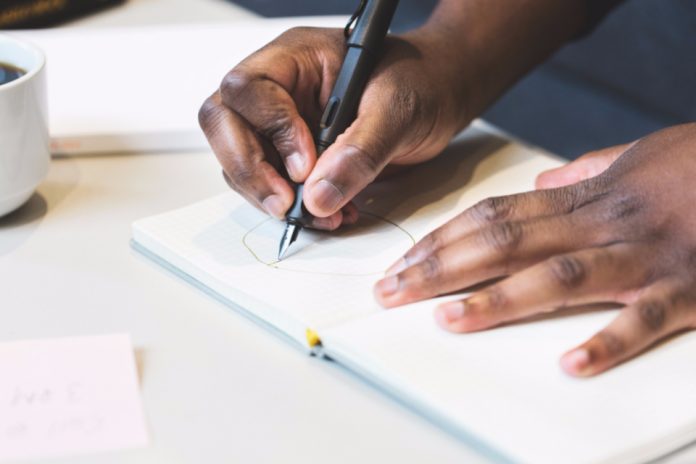Everyone has their own take on what makes a logo perfect.
New trends (and fads) in logo design appear every year. Be careful not to fall into the trap of following every new fad.
Today, small businesses and startups have to compete in an increasingly noisy world, against larger, more established businesses. To do so, they need to get noticed. Customers who are just discovering your brand need something to remember you by, and your logo serves as a kind of souvenir for them to hold on to.
Customer preferences and markets change over time, so it’s important to understand trends before you settle on your brand and create a logo.
I’m not suggesting you follow fads. Lasting trends help you to better shape and define your brand. Passing fads can lead you astray.
When you break it down, what are the most fundamental, necessary elements that a logo should possess – regardless of fads or trends? And, how do you know if your logo has these key elements?
Here, we’ve broken down the logo itself into its most essential traits and functions. The result? Your guide to the most effective logo design possible.
At its most basic, a logo is a small, symbolic piece of artwork that represents a business.
If you meet these following four requirements, many other commonly cited logo must-haves, like simplicity and memorability, naturally follow.
A Good Logo Must Embody Your Brand
First and foremost a logo should embody your business’s brand. This is more important than simplicity, balance, line or color.
Even an aesthetically perfect logo fails in its purpose if it doesn’t communicate the essence of the brand it represents.
Your logo is a visual shorthand for your business. You want it to convey the essence of your business quickly and effortlessly. This is the one quality that truly gives a logo any chance at being effective.
If your logo doesn’t make consumers think of your brand, then you should head straight back to the drawing board.
Before a logo can communicate anything about your brand, you need to understand your brand. What values, practices, benefits, products or services set your company apart and make it unique?
Your logo has to derive meaning from your brand, not the other way around. The world’s best brands are not well-known because of their logo, they are known because of the people and vision that the logo represents.
A Good Logo Must Be Instantly Recognizable
As your brand’s visual ambassador, a logo must be easily and instantly recognizable.
You want people to see your logo and instantly think of your brand.
First, a logo must be sufficiently unique that it only reminds consumers of your brand.
Logos that take their cue from design trends or stock rather than the brands they represent begin to look mighty similar – and that’s a problem.
Your logo’s one job is to visually identify your brand. To successfully accomplish that goal, a logo must be unique. You want consumers to associate your logo with your company. And, you want them to build a trusting relationship with that logo; and consequently, your brand.
If your logo looks like your competitor’s logo, they’re not building a trusting relationship with you. They’re two-timing you with your twin brother and they don’t even know it.
To avoid the trap of an indistinct, generic logo always take your design cues from your unique brand.
Second, a good logo design must be easy to visually recognize.
Logos featuring bold lines and strong, unique forms are easy to visually identify. Think of the Nike “Swoosh,” the World Wildlife Federation’s negative space panda or Apple’s apple. All have a strong, easily identified and unique visual form.
Truthfully, in order to know if a design is visually unique or not you have to have some idea of what’s already out there.
A Good Logo Must Be Versatile
A logo, if it is going to function effectively, must be versatile. It will (or should) appear on every piece of branded material your company produces. These can range in size from a business card to a billboard… and every size in between. Your logo needs to scale effectively to any size.
So what does this mean in terms of design? It means that excessive complexity is out. Detailed textures, intricate linework or complex details may be completely lost (rendering the logo unrecognizable) when scaled down to fit on a business card. Simplicity is your best friend.
Designs that rely too heavily on color may also suffer. Color gradients or fades may lose their form entirely when rendered at small sizes. And, important detail may be lost when a logo is rendered in black and white, if the design relies too much on color for its impact.
Your logo needs to be visible on any surface, against any color, at any size. If your logo can’t go everywhere your brand needs to appear, then what’s the point?
A Good Logo Must Be Timeless
A logo is a branding tool. And, good branding is consistent branding.
You want consumers to develop loyalty and trust in your brand. But trust and loyalty don’t grow overnight. Brand consistency, over the long-term, is the key to building trust and loyalty.
And, once you’ve built trusting and loyal relationships with consumers, starting over with a completely new logo can really set you back. You’ll have to rebuild your audience’s relationship with your brand identity from scratch.
When Tropicana changed their beloved logo in 2009, their sales dropped by 20%. They returned to their original logo in less than two months.
While it’s true that a designer can’t predict what designs will become truly timeless they can avoid choices that will instantly date their designs.
Drawing too deeply from the logo design trend well is going to leave you with a logo that looks dated faster than a design that draws its visual cues from your brand. Once a gimmicky design trend becomes dated, it dates your logo as well.
In Conclusion:
Remember that in logo design there is no one “right answer.” What is right for one brand is wrong for another.
And in the absence of absolutes, it may be tempting to make logo design choices based on what’s popular. But, that instinct can only backfire. After all, popularity is determined by a crowd – and you want your logo to stand out from the crowd.
So, let your unique brand identity be your logo’s north star. And remember to aim for a design that is instantly recognizable, timeless and versatile.
To determine if your logo is up to par, fill out this quick questionnaire. How well does your logo perform?
Your Logo Design Questionnaire
Does your logo:
Communicate your brand essence to someone who knows nothing about your business?
Look good in color and in black and white?
Remain easy to recognize and identify when rendered at small scale and large scale?
Look similar to a competitor’s logo?
Rely heavily on contemporary design trends?
Resemble any overused or overdone design concepts?
If you answered “Yes” to the first three questions, that’s great! But, if you answered “Yes” to any of the bottom three questions, you may not have found the right logo design, yet.
Find a Home-Based Business to Start-Up >>> Hundreds of Business Listings.

















































